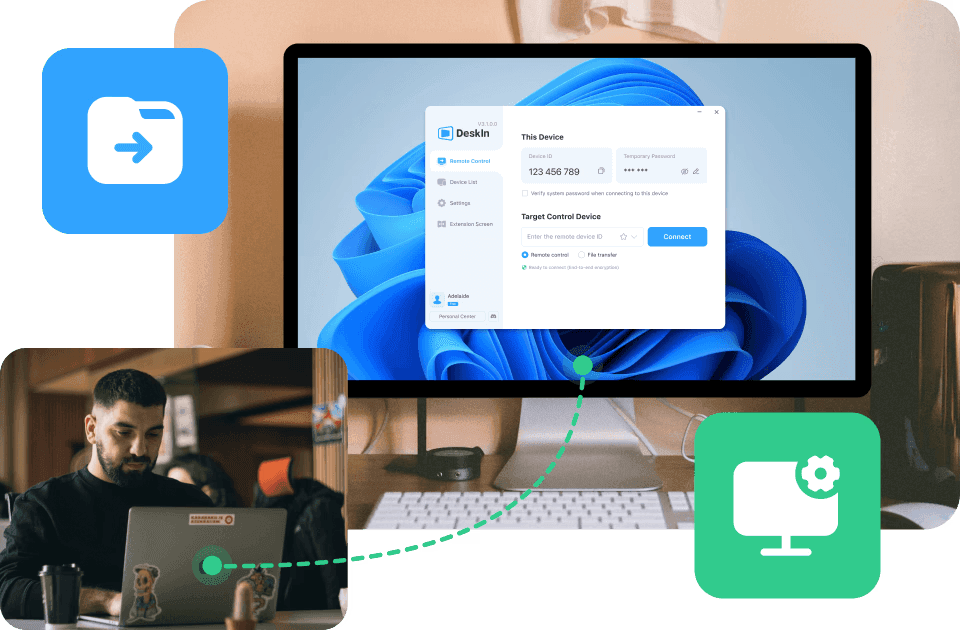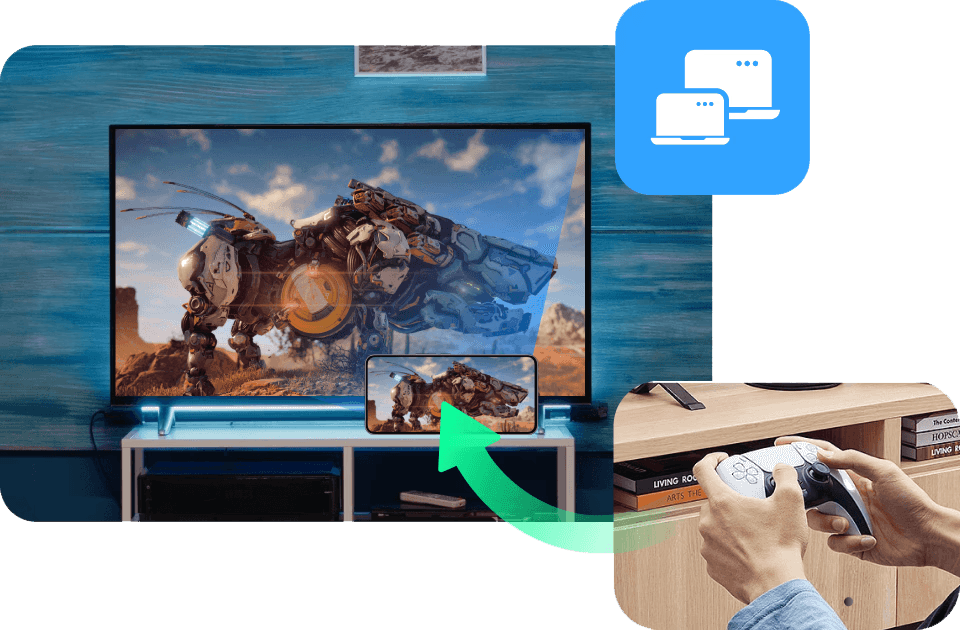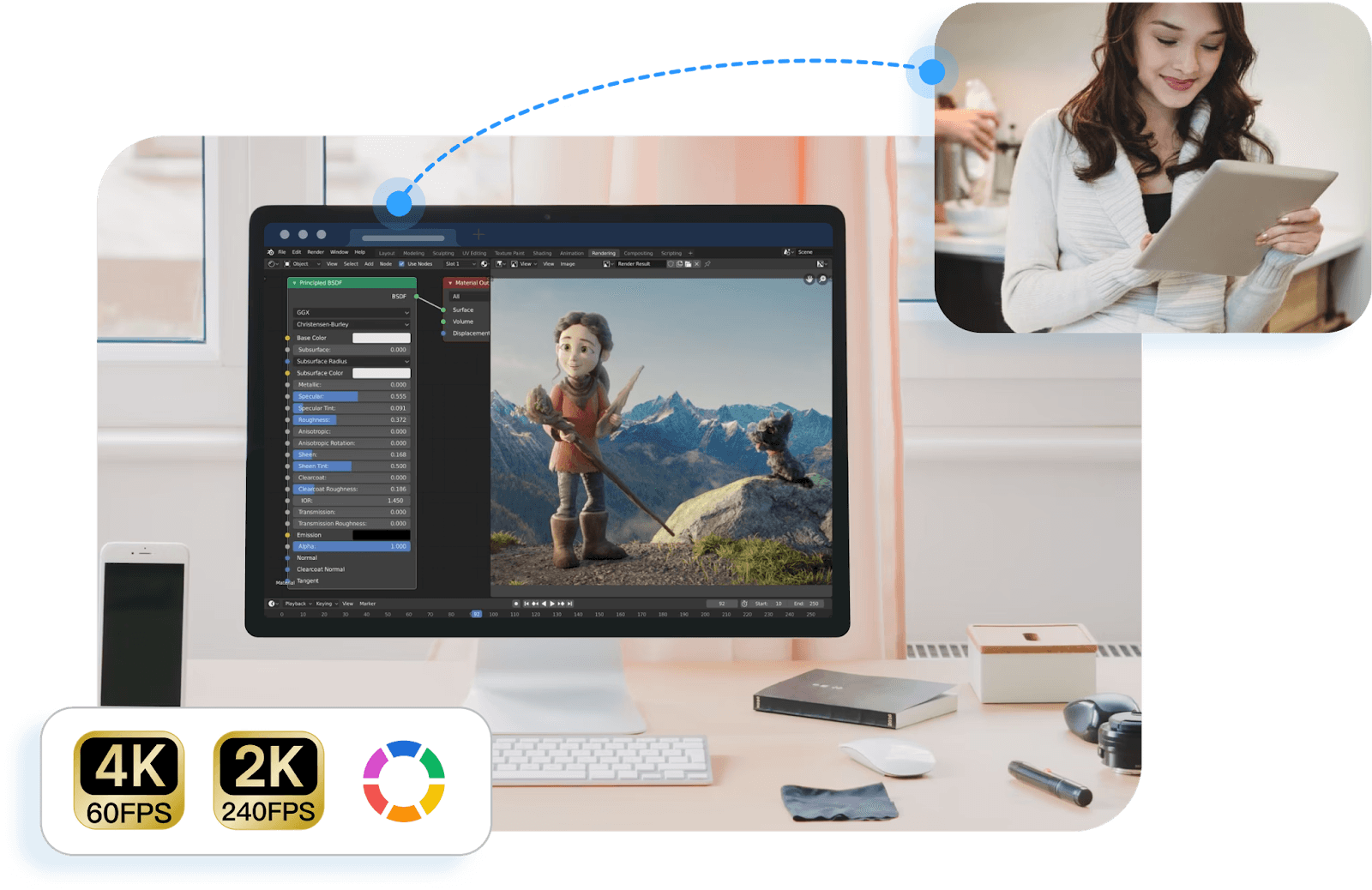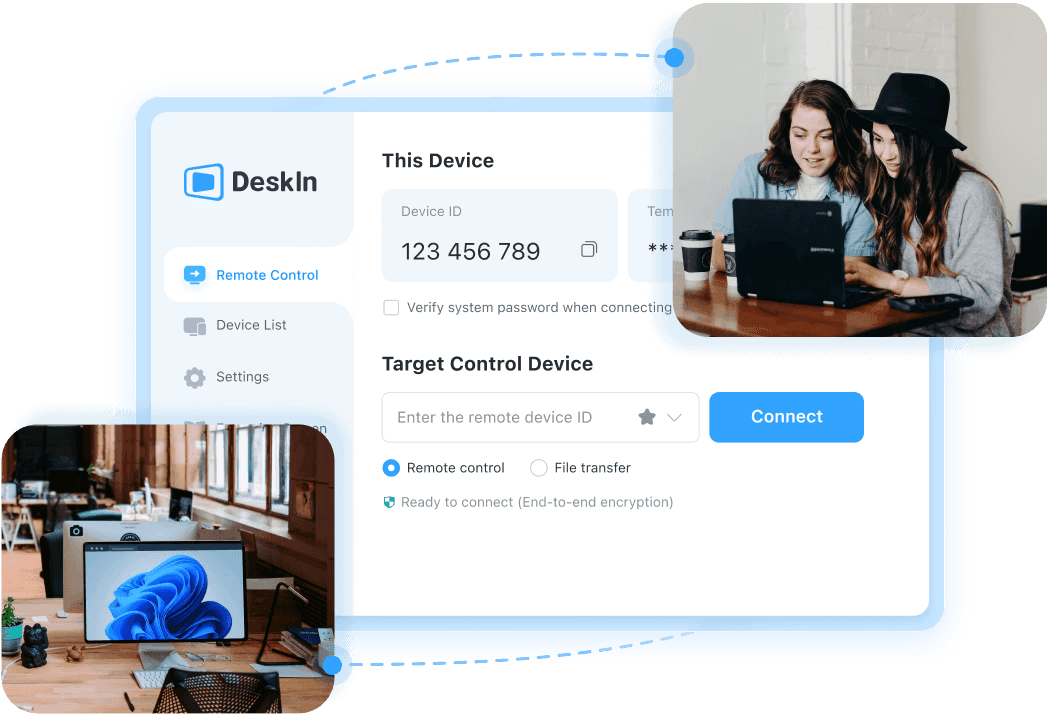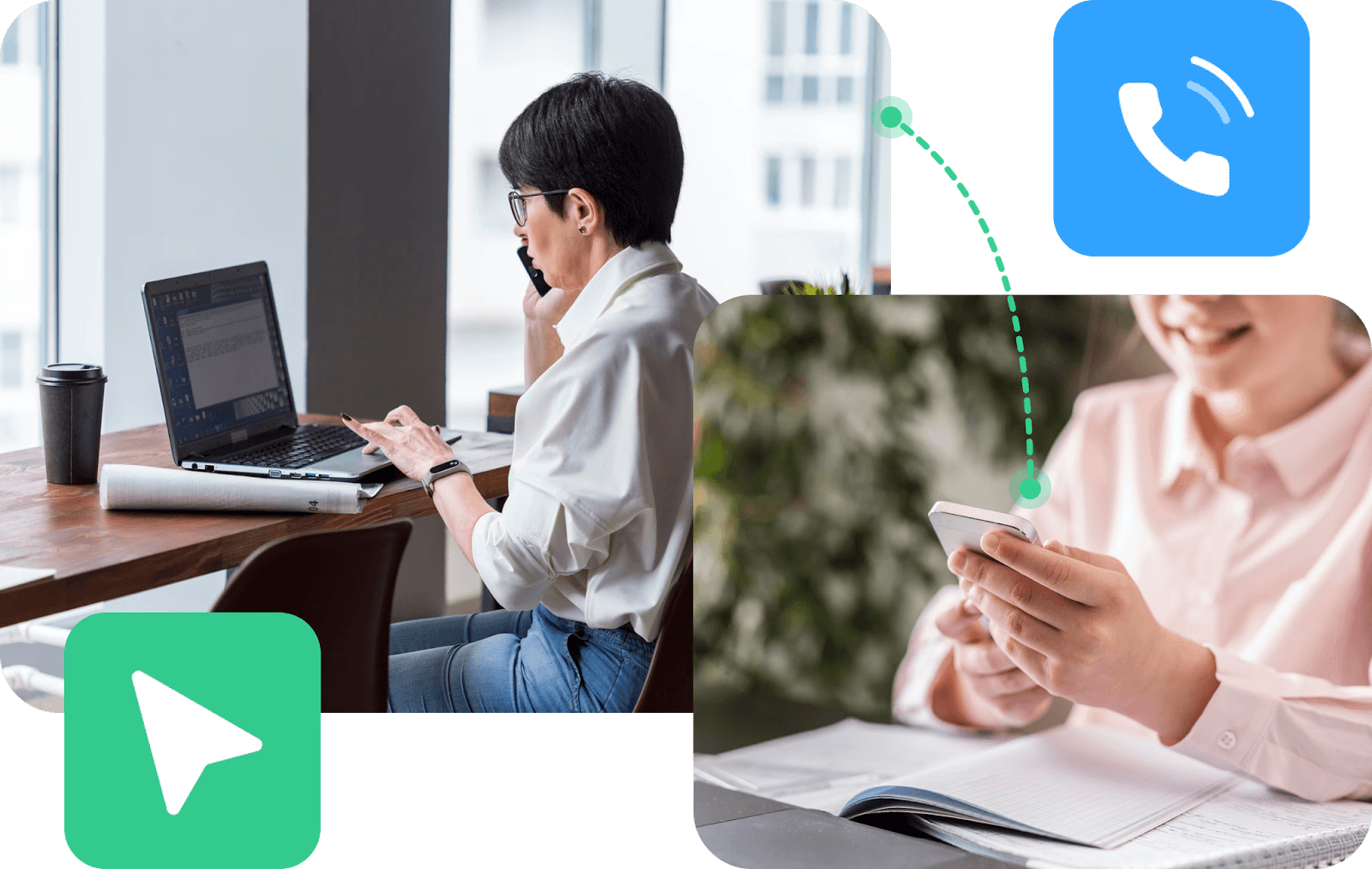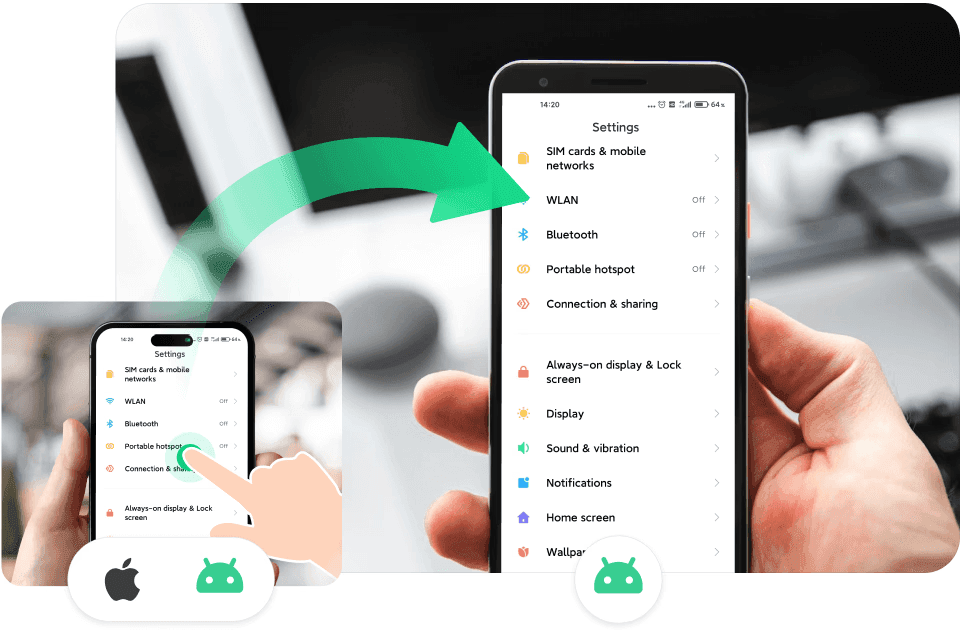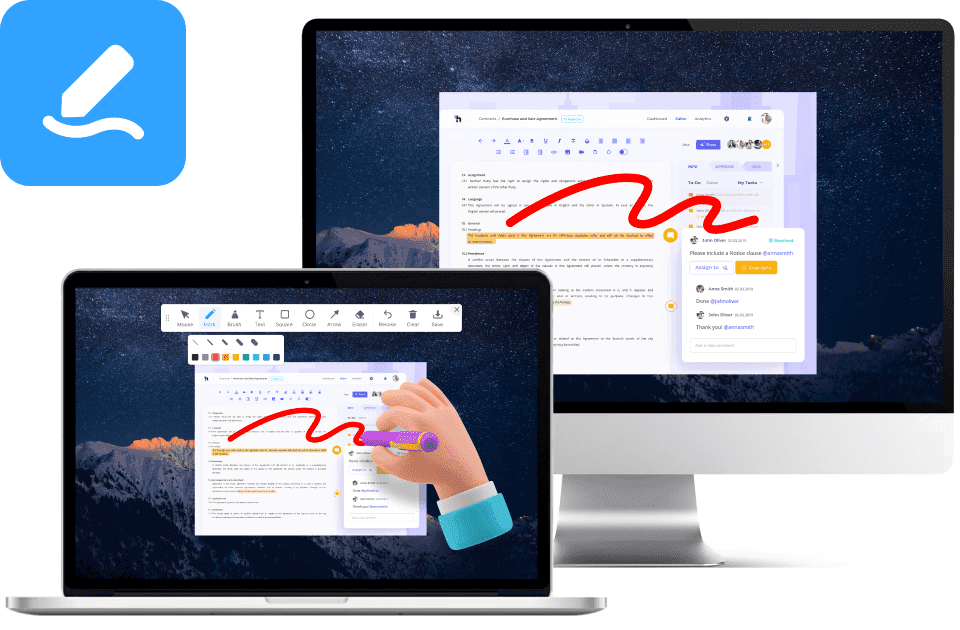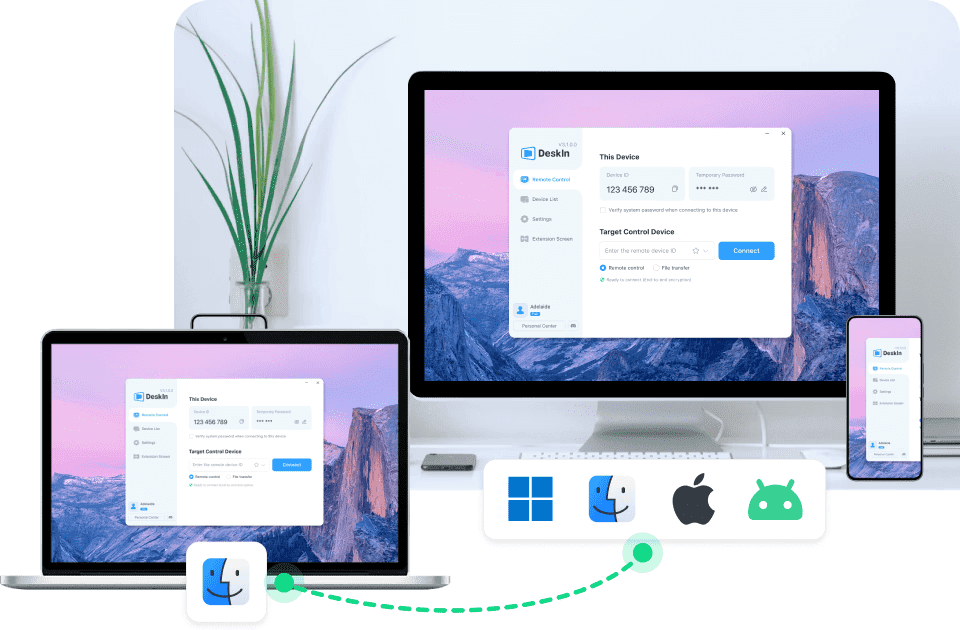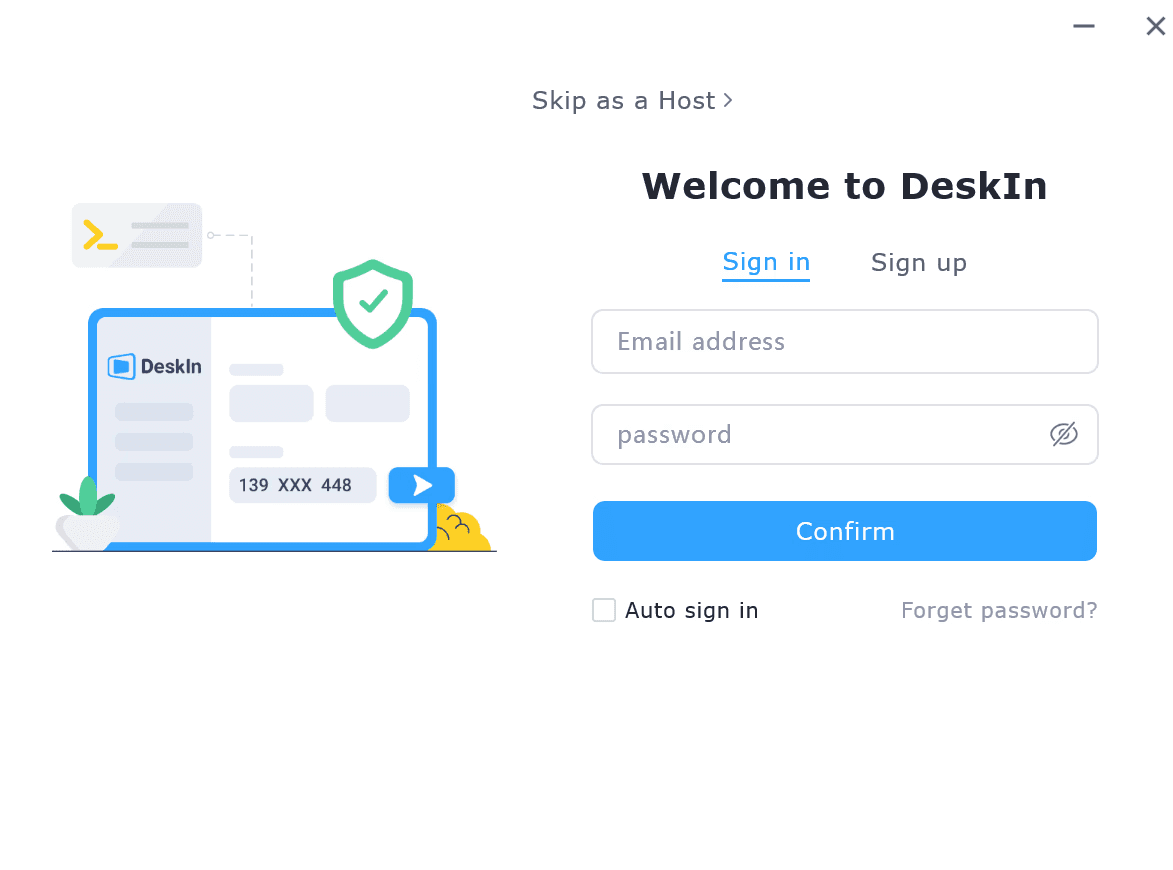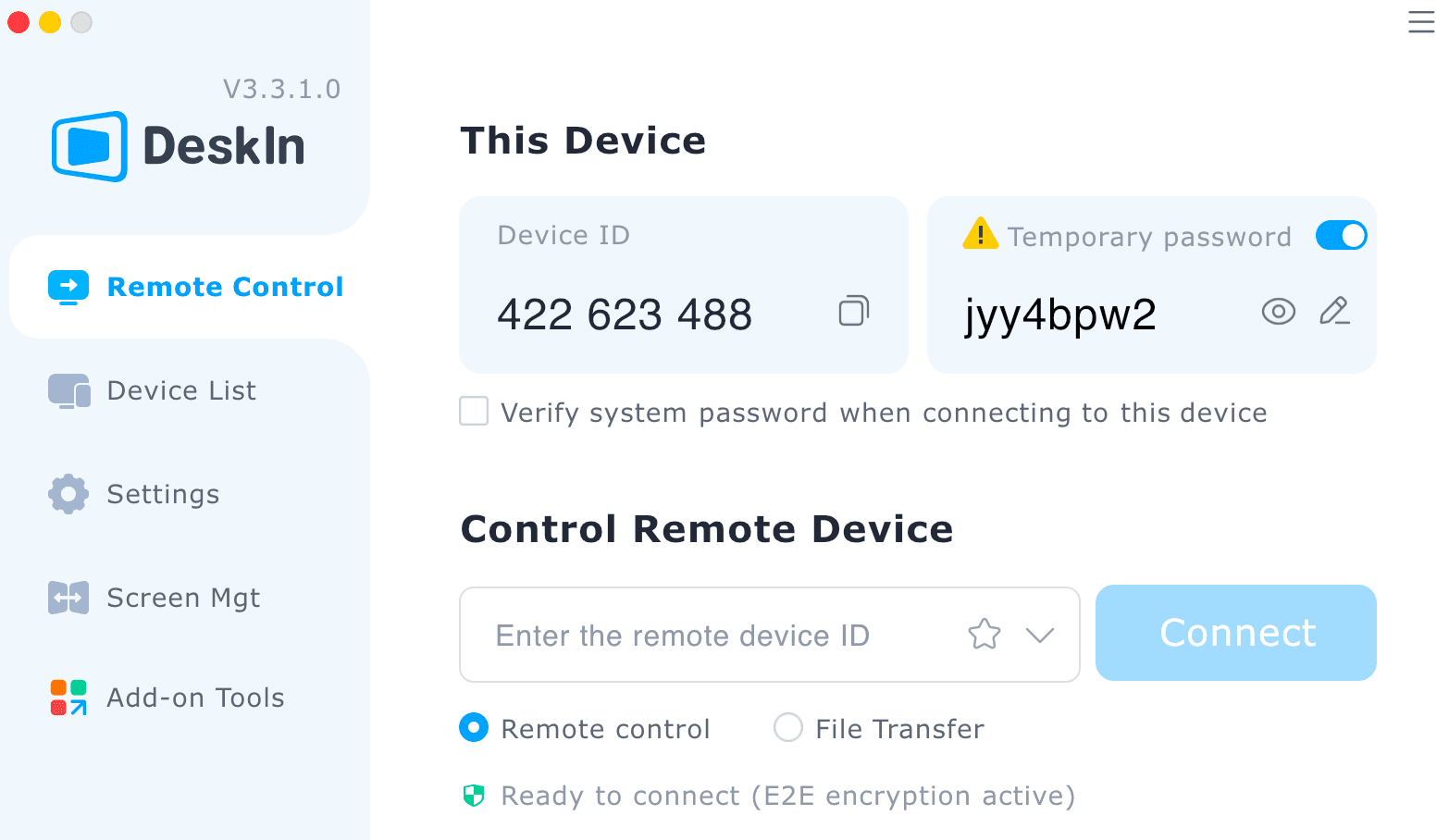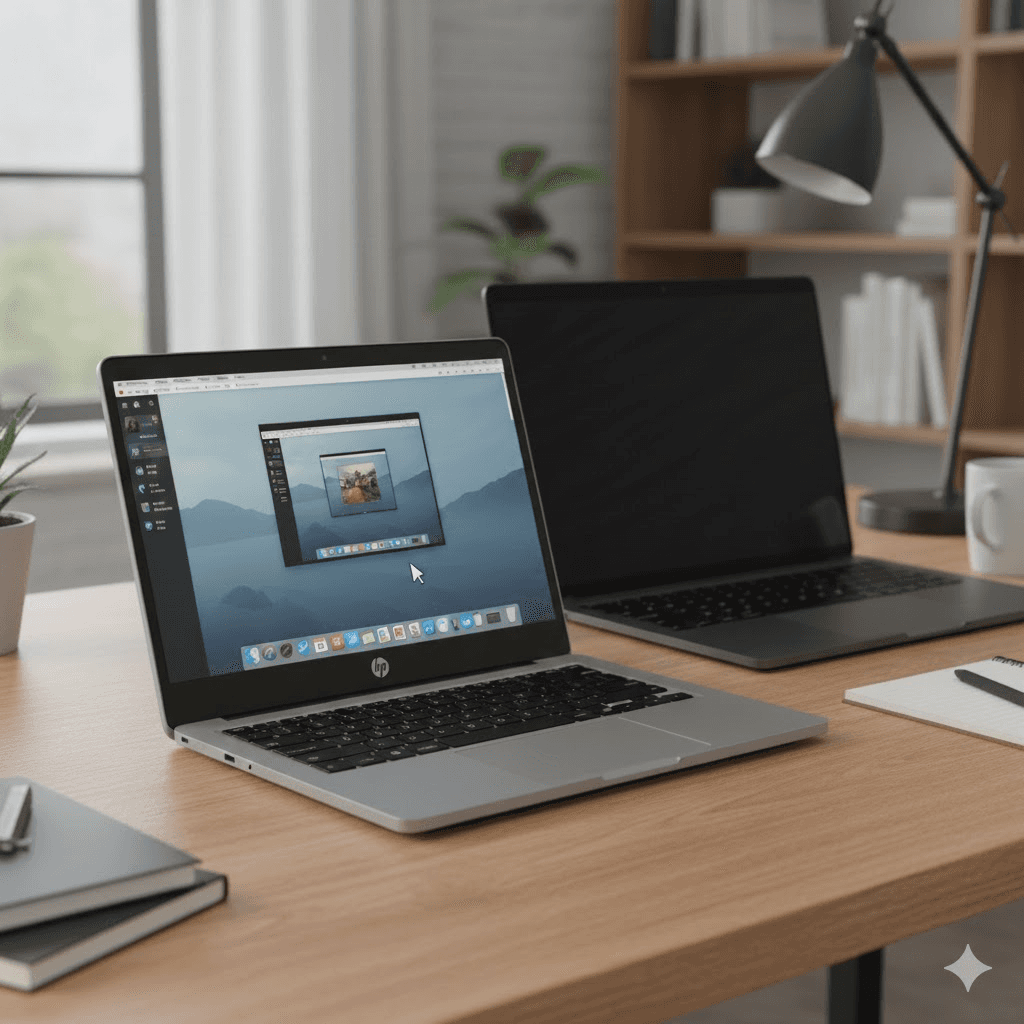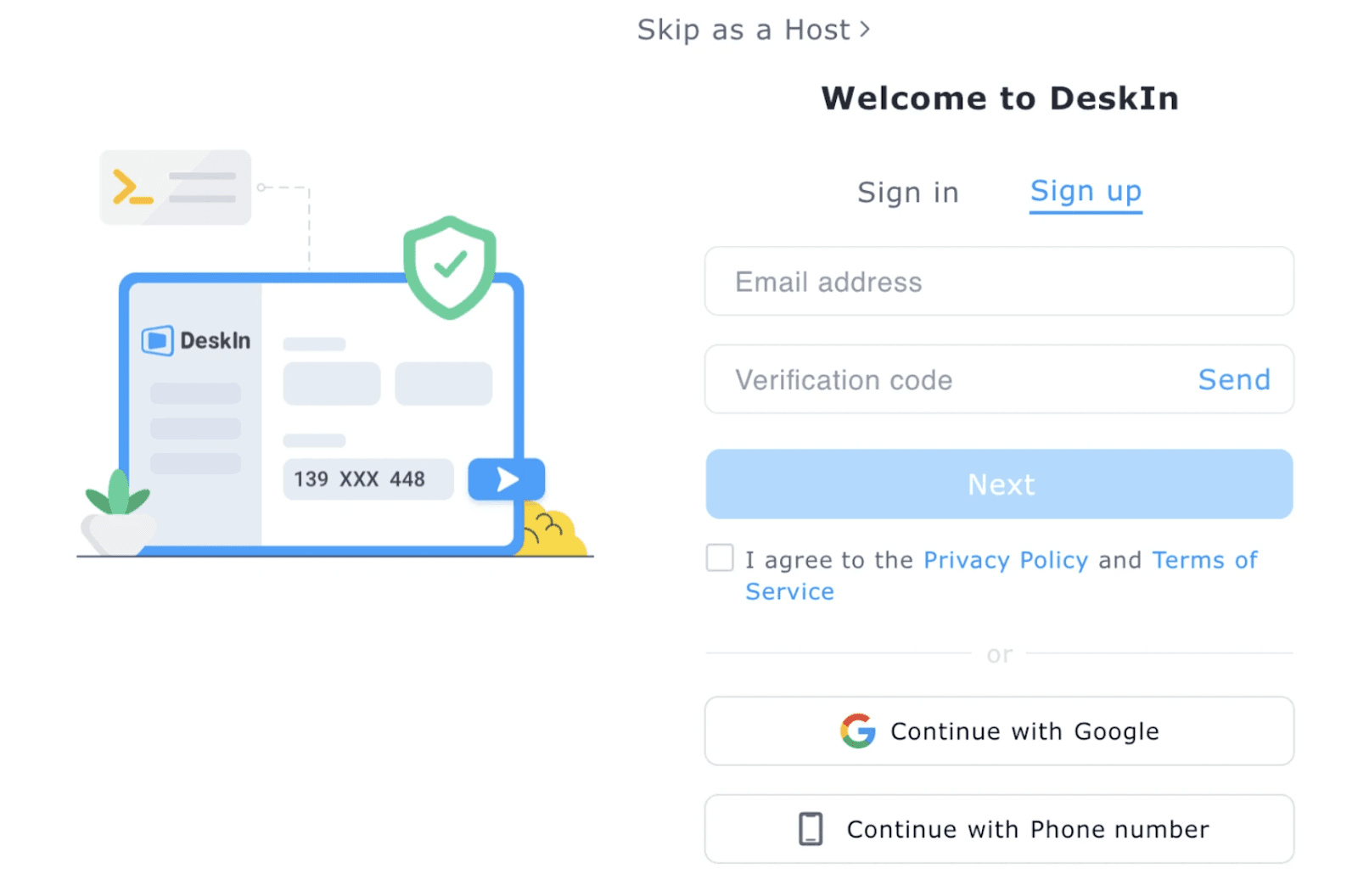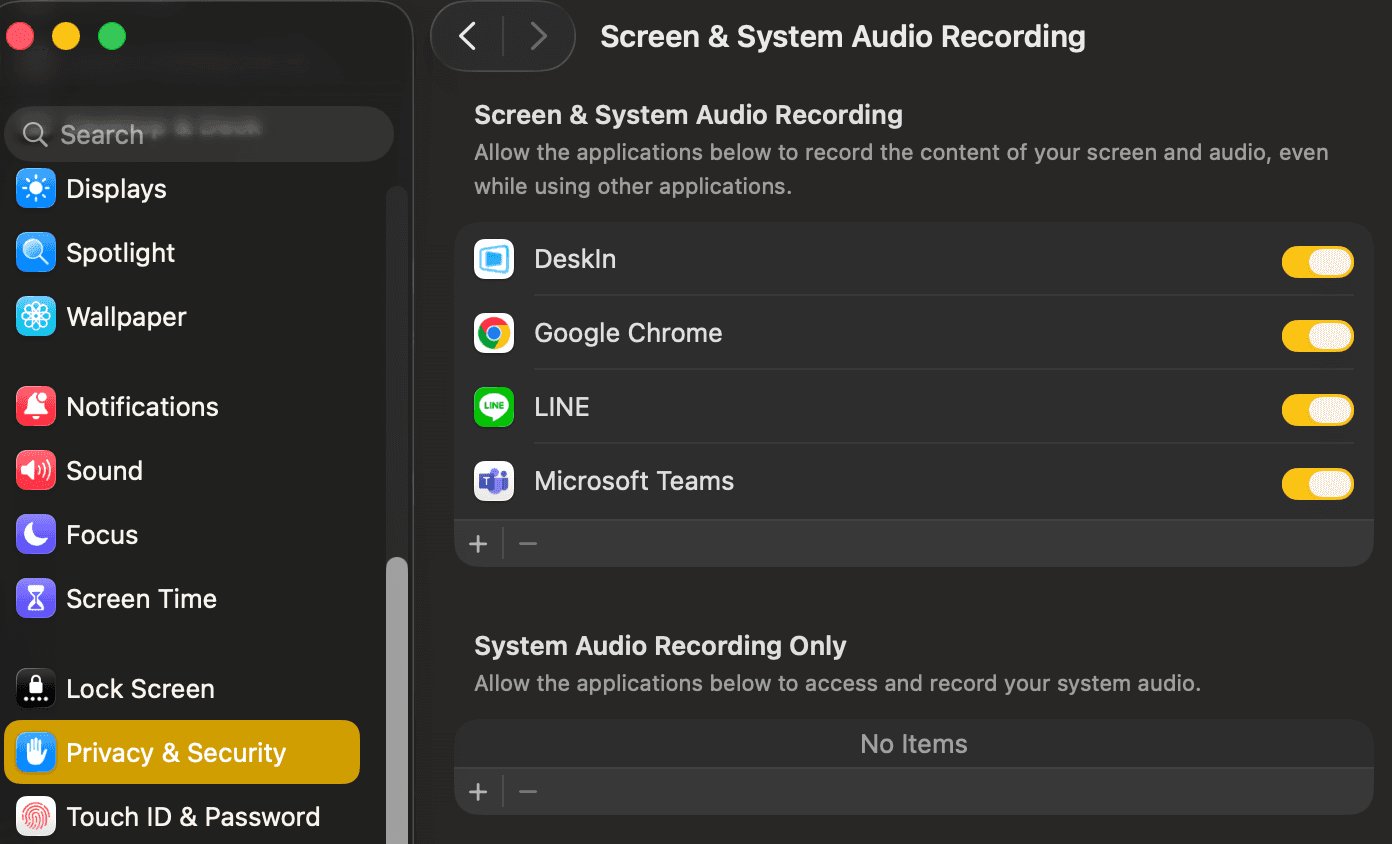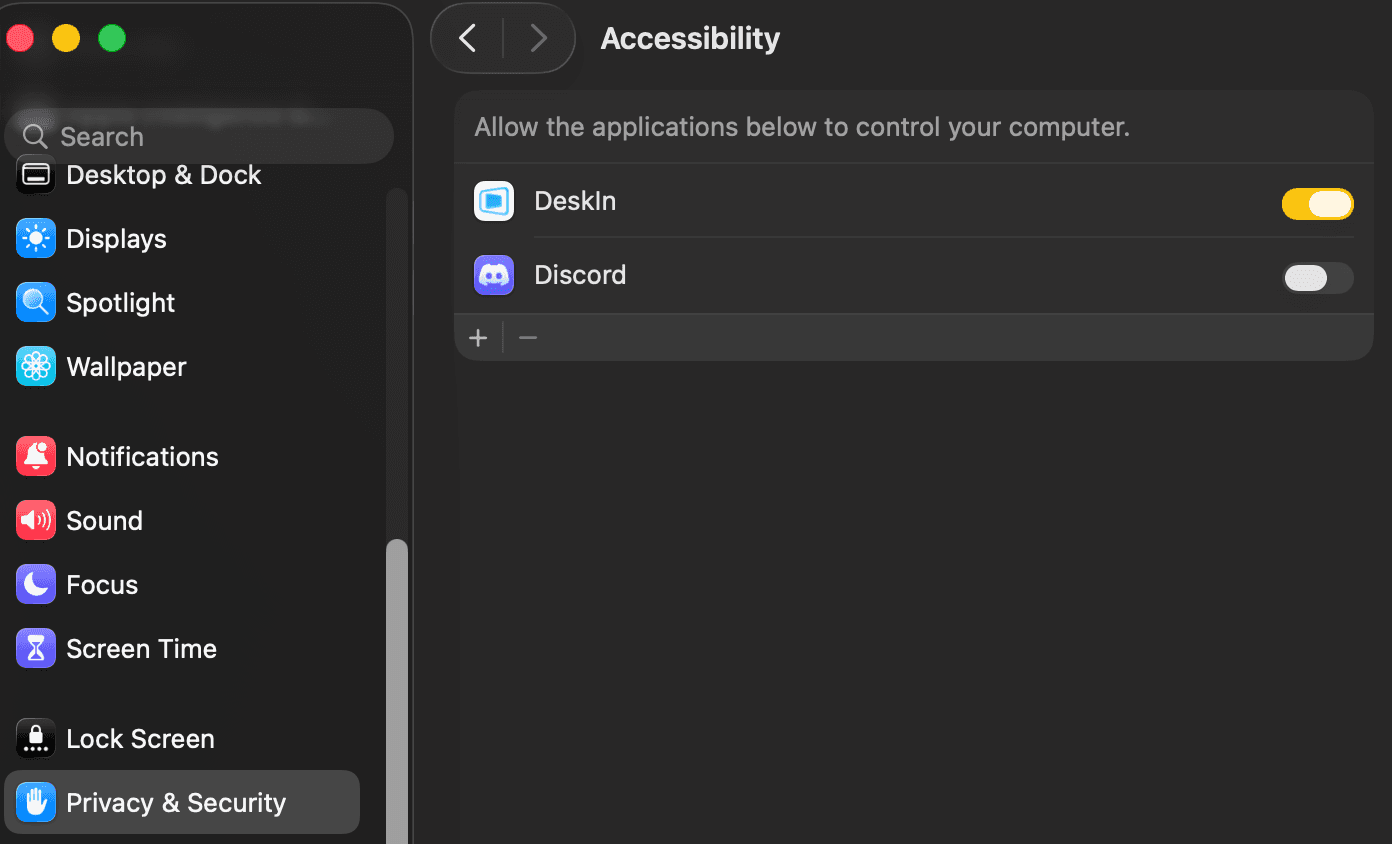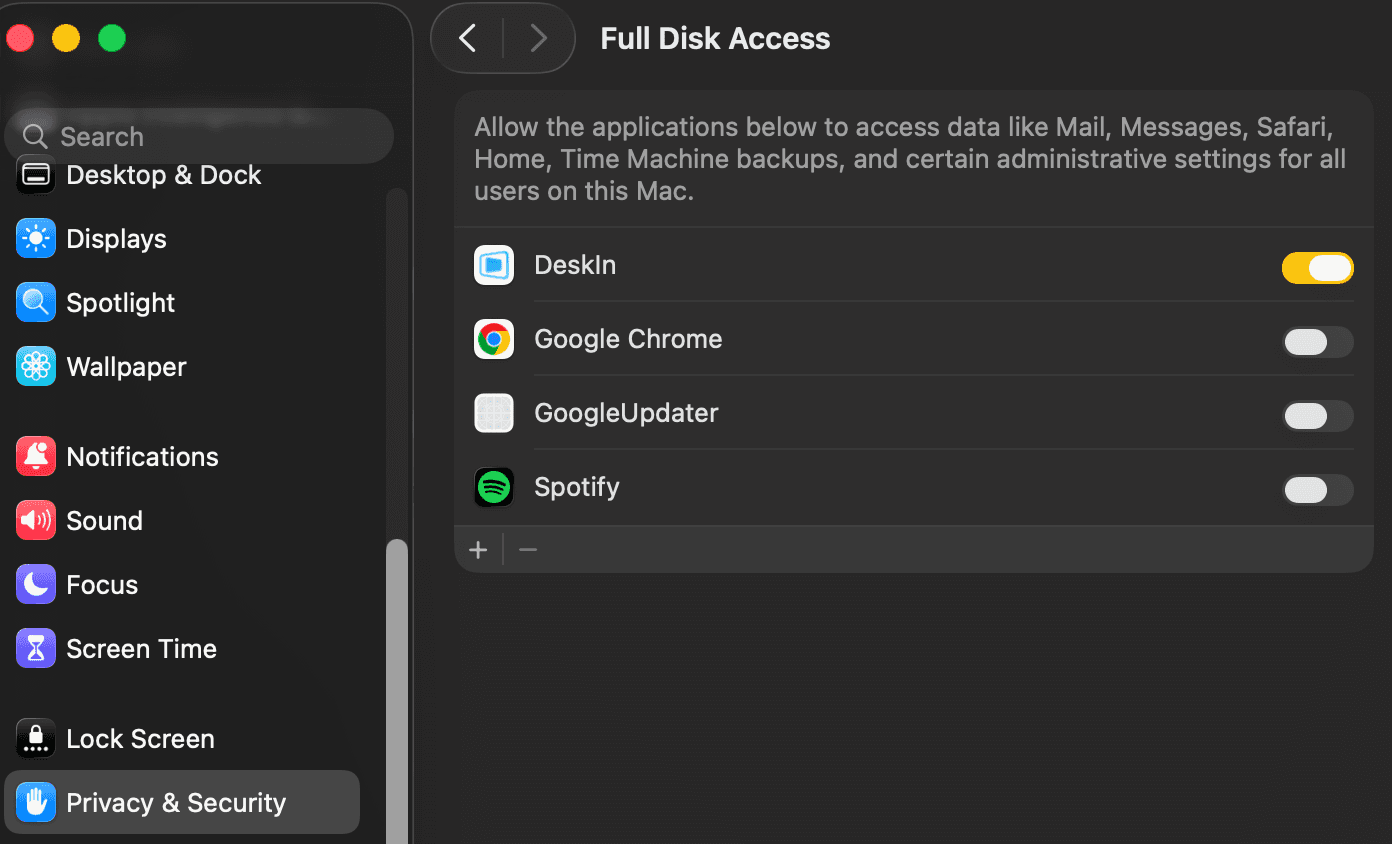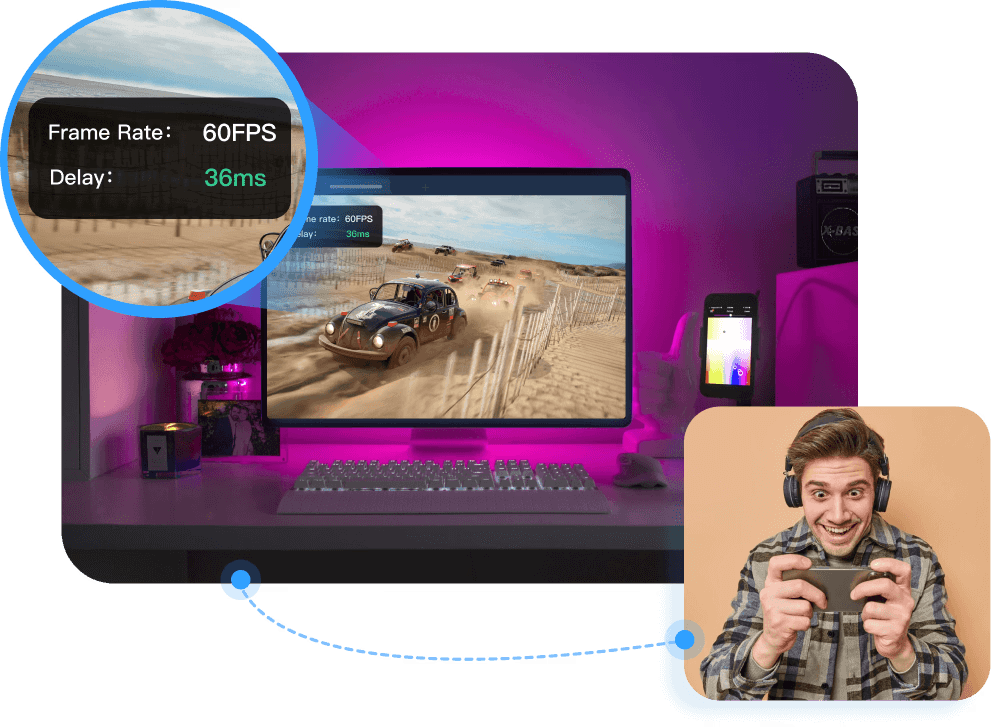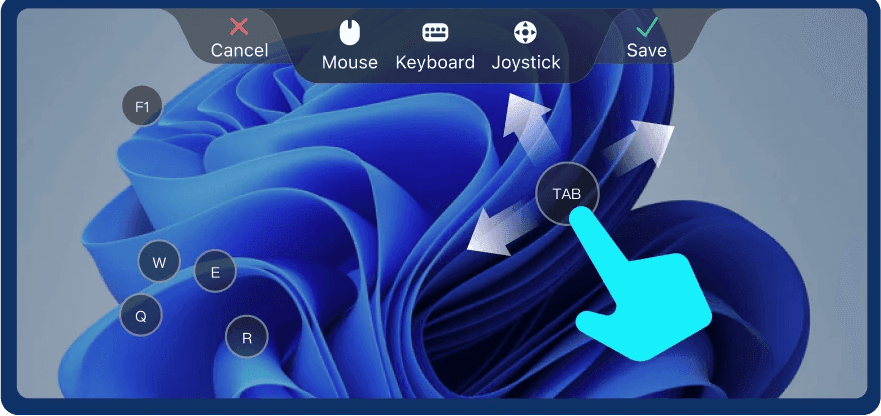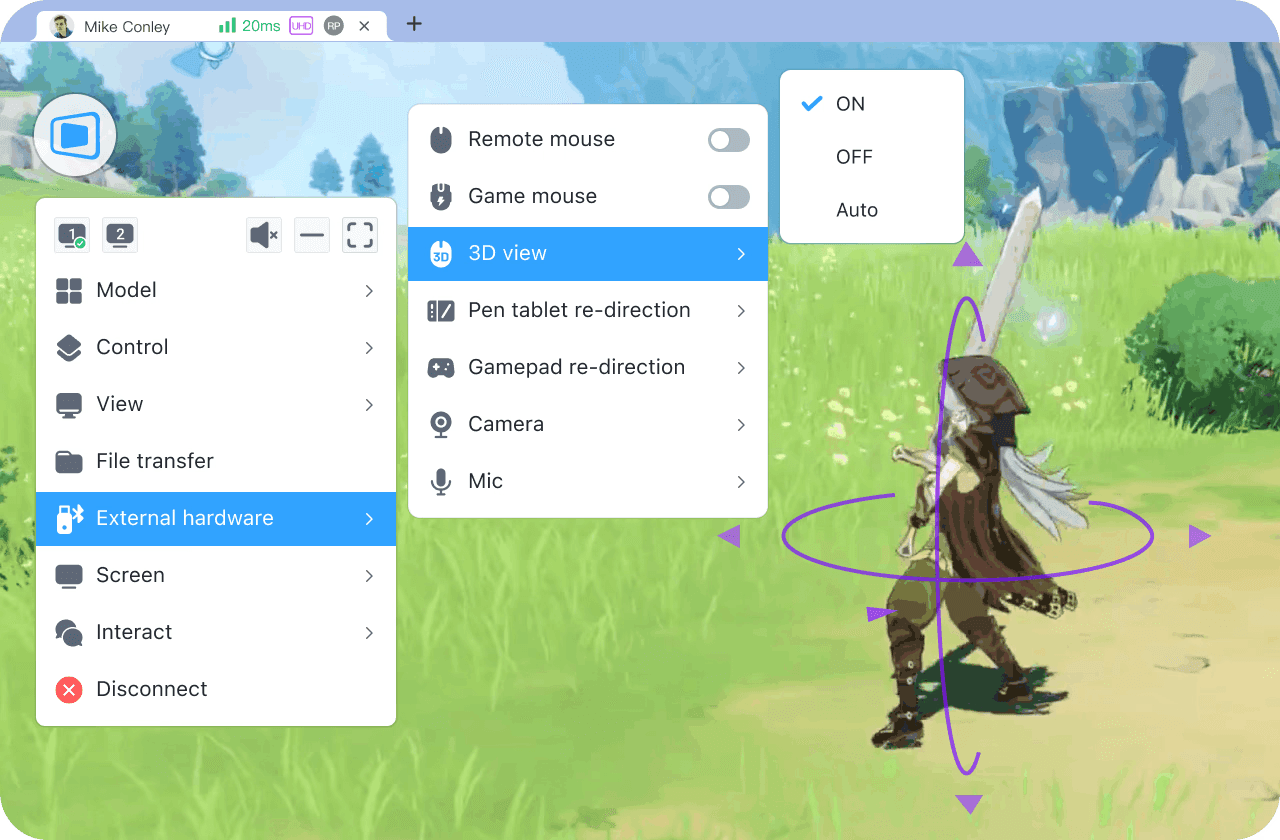Làm thế nào để sử dụng điện thoại như màn hình thứ hai: Phương pháp USB & Wireless
Chuyển đổi điện thoại của bạn thành màn hình thứ hai cho máy tính có thể là một cách đơn giản và hiệu quả để tăng cường năng suất. Dù bạn là người đa nhiệm điều chỉnh bảng tính và nghiên cứu, một lập trình viên tham khảo tài liệu, hay một nhà thiết kế cần thêm không gian màn hình, sử dụng điện thoại của bạn như một màn hình phụ giúp giữ mọi thứ luôn rõ ràng và được sắp xếp.
Trong hướng dẫn này, chúng tôi sẽ đề cập đến 2 phương pháp dễ dàng (không dây và kết nối USB) để biến Android hoặc iPhone của bạn thành một màn hình phụ di động. Ngoài ra, người dùng Samsung sẽ nhận được một mẹo bổ sung cho sự tích hợp liền mạch. Đã sẵn sàng để tăng cường hiệu suất của bạn chưa? Tiếp tục đọc nhé!
⛱️ Đọc thêm:
Phương pháp 1. Sử dụng điện thoại Android/iPhone như màn hình thứ hai không dây
Một trong những cách dễ nhất để sử dụng điện thoại của bạn như một màn hình thứ hai là thông qua kết nối không dây. Để có trải nghiệm liền mạch, hãy thử DeskIn, một công cụ phản chiếu màn hình chuyên nghiệp. Công cụ hữu ích này có thể kết nối điện thoại của bạn (Android/iOS) với Windows hoặc Mac, giúp dễ dàng sử dụng điện thoại như màn hình thứ hai cho máy tính của bạn. Đối với một người làm việc từ xa mở rộng màn hình laptop, một nhà thiết kế xem xét hình ảnh độ phân giải cao, hoặc một đại lý hỗ trợ xử lý màn hình của khách hàng, DeskIn giữ mọi thứ trong tầm nhìn mà không bị lag.
Thậm chí tốt hơn, sự dễ sử dụng của nó khiến mọi thứ trở nên dễ dàng hơn. Bạn chỉ cần chọn một thiết bị chỉ với một cú nhấp chuột để kết nối các thiết bị. Không cần chuyên môn kỹ thuật. Với chất lượng hình ảnh lên tới 4K và độ trễ cực thấp dưới 40ms, trải nghiệm màn hình thứ hai của bạn vẫn sắc nét và mượt mà, đảm bảo bạn luôn duy trì năng suất mà không bị lag hay độ trễ. DeskIn là phần mềm làm việc từ xa tốt nhất mà tôi đã từng sử dụng!
🏝️ Các tính năng nổi bật của DeskIn
Hỗ trợ đa nền tảng: Kết nối Android, iOS, Windows và Mac một cách dễ dàng.
4K HD + Độ trễ thấp (<40ms): Hình ảnh sắc nét với khả năng phản hồi gần thời gian thực.
Kết nối không dây với một cú nhấp chuột: Chỉ cần một cú chạm để kích hoạt kết nối.
Bảo mật & Mã hóa: Bảo vệ dữ liệu của bạn trong các phiên remote. DeskIn là phần mềm máy tính để bàn từ xa bảo mật tốt nhất.
Hoàn hảo cho nhiều tình huống: làm việc từ xa, họp, và hỗ trợ kỹ thuật, v.v.
Các tính năng bổ sung: Cung cấp các tính năng khác như màn hình, phản chiếu, màn hình ảo, điều khiển từ xa, truy cập camera từ xa.
Bắt đầu với DeskIn rất đơn giản. Chỉ với một cú chạm, bạn có thể sử dụng điện thoại của mình như một màn hình thứ hai không dây. Hãy cùng đi qua các bước.
Bước 1. Tải xuống và cài đặt DeskIn
Truy cập trang web chính thức của DeskIn trên điện thoại Android/iPhone và máy tính của bạn. Tải phiên bản phù hợp cho mỗi thiết bị và làm theo các bước để cài đặt DeskIn.
Nhấp vào đây để tải xuống DeskIn
Bước 2. Đăng nhập vào tài khoản DeskIn của bạn
Đăng nhập vào cùng một tài khoản DeskIn trên cả hai thiết bị của bạn. Nếu bạn chưa có tài khoản, hãy tạo một tài khoản và đăng nhập.
Bước 3. Sử dụng điện thoại như màn hình thứ hai không dây
Trên máy tính của bạn, vào "Quản lý màn hình". Dưới "Phản chiếu/Mở rộng màn hình đến các thiết bị khác", chọn "Mở rộng màn hình của tôi". Sau đó chọn điện thoại của bạn từ danh sách pop-up và nhấp vào "Bắt đầu mở rộng".

👀 Bạn cũng có thể muốn biết:
[Câu trả lời chi tiết] Tại sao tôi không thể mở rộng màn hình: Nguyên nhân và giải pháp
10 lựa chọn phần mềm máy tính để bàn từ xa hàng đầu [Đã được các chuyên gia kiểm tra]
Phương pháp 2. Sử dụng điện thoại Android/iPhone như màn hình qua USB
Nếu bạn thích một kết nối ổn định, không lag, hãy sử dụng cáp USB thay vì Wi-Fi. Tuy nhiên, sử dụng cáp một mình sẽ không biến điện thoại của bạn thành màn hình thứ hai. Bạn sẽ cần một công cụ như Splashtop Wired XDisplay để làm cho nó hoạt động. Trong phần này, chúng tôi sẽ giới thiệu cách sử dụng điện thoại Android hoặc iPhone như một màn hình từng bước.
Để bắt đầu:
Đảm bảo thiết bị của bạn đáp ứng các yêu cầu: Android 5.0+, iOS 9.0+ (iPhone/iPad), Windows 7+, macOS 10.11+
Sử dụng cáp USB tương thích
Đến khi đã sẵn sàng, hãy làm theo các hướng dẫn bên dưới.
Bước 1. Cài đặt Splashtop Wired XDisplay
Đối với điện thoại của bạn, truy cập App Store hoặc Google Play và cài đặt "Splashtop Wired XDisplay" trên điện thoại của bạn.
Đối với máy tính của bạn, truy cập trang web chính thức của Splashtop và tải xuống tác nhân Wired XDisplay cho máy tính của bạn (Windows hoặc Mac).
Bước 2. Kết nối điện thoại và máy tính của bạn qua USB
Sử dụng cáp USB tương thích để kết nối điện thoại của bạn với PC hoặc Mac của bạn.
Bước 3. Sử dụng điện thoại như màn hình thứ hai
Mở ứng dụng Wired XDisplay trên điện thoại của bạn và khởi động tác nhân desktop trên máy tính của bạn. Ứng dụng sẽ tự động phát hiện kết nối và mở rộng màn hình của bạn đến điện thoại.

🌅 Mẹo: Nếu cần, hãy vào cài đặt màn hình của máy tính để điều chỉnh độ phân giải, bố cục màn hình hoặc hướng.
Mẹo bổ sung: Sử dụng điện thoại Samsung như màn hình thứ hai cho PC Windows
One UI của Samsung có tính năng Màn hình thứ hai tích hợp sẵn, chính thức hỗ trợ máy tính bảng Galaxy Tab S7/S8/S9 như màn hình mở rộng cho PC Windows. Một số điện thoại gập như Galaxy Z Fold 4 & Z Fold 5 cũng có khả năng này. Nhưng nó được ẩn đi và cần phải kích hoạt thủ công.
Để kích hoạt nó, bạn sẽ cần điều chỉnh các cài đặt nhà phát triển hoặc sử dụng các lệnh ADB. Điều này có thể khó khăn cho những người mới bắt đầu. Nếu bạn sở hữu một thiết bị được hỗ trợ và không ngại tinh chỉnh, đây là một giải pháp tốt không cần ứng dụng. Nếu không, các tùy chọn không dây/USB có thể dễ hơn.
Bước 1. Truy cập Google Play, tải xuống ứng dụng "SystemUI Tuner". Khi nó được thiết lập, chạm vào "Hệ thống" > "Màn hình khóa". Sau đó chạm vào "Lối tắt màn hình khóa" và chọn một trong các lối tắt từ bên trái hoặc bên phải.
Bước 2. Trong danh sách ứng dụng, tìm "Smart View" và sau đó chọn tùy chọn có "Hoạt động Màn hình thứ hai".
Bước 3. Sau đó gõ lệnh ADB sau: adb shell "settings put system lock_application_shortcut '1;http://com.samsung.android.smartmirroring/com.samsung.android.smartmirroring.player.SecondScreenActivity;1;null;'"
Bước 4. Khi đã hoàn thành, hãy vào màn hình khóa và khởi động lối tắt mà bạn vừa đặt. Trang cài đặt màn hình thứ hai nên được khởi động.

Bước 5. Ở lại trên trang này. Sau đó, trên PC của bạn, nhấn "Windows + K". Bạn sẽ thấy menu Cast, và thiết bị của bạn sẽ xuất hiện trong danh sách. Chọn điện thoại mục tiêu của bạn và chờ kết nối.
Bước 6. Khi đã kết nối, mở menu Cast một lần nữa, và đánh dấu vào ô bên cạnh "cho phép chuột, bàn phím, chạm, và bút nhập từ thiết bị này". Sau đó bạn có thể sử dụng điện thoại Samsung như một màn hình thứ hai cho PC Windows của bạn.

Kết luận
Sử dụng điện thoại như một màn hình thứ hai chắc chắn có thể hợp lý hóa khối lượng công việc của bạn và tăng cường năng suất. Đối với sự dễ dàng không dây, DeskIn cung cấp phát trực tuyến 4K đa nền tảng với cấu hình đơn giản. Nếu bạn thích hiệu suất ổn định, không lag, Splashtop Wired XDisplay với USB là lựa chọn lý tưởng. Mặc dù nó có thể cần một số tinh chỉnh, người dùng Samsung với Galaxy Tabs hoặc các thiết bị gập có thể thử tính năng Màn hình thứ hai tích hợp sẵn.
Chỉ cần chọn phương pháp phù hợp với mức độ thoải mái công nghệ và nhu cầu làm việc của bạn. Hãy thử một phương pháp để sử dụng điện thoại như màn hình thứ hai!
Làm thế nào để sử dụng điện thoại như màn hình thứ hai: Phương pháp USB & Wireless
Chuyển đổi điện thoại của bạn thành màn hình thứ hai cho máy tính có thể là một cách đơn giản và hiệu quả để tăng cường năng suất. Dù bạn là người đa nhiệm điều chỉnh bảng tính và nghiên cứu, một lập trình viên tham khảo tài liệu, hay một nhà thiết kế cần thêm không gian màn hình, sử dụng điện thoại của bạn như một màn hình phụ giúp giữ mọi thứ luôn rõ ràng và được sắp xếp.
Trong hướng dẫn này, chúng tôi sẽ đề cập đến 2 phương pháp dễ dàng (không dây và kết nối USB) để biến Android hoặc iPhone của bạn thành một màn hình phụ di động. Ngoài ra, người dùng Samsung sẽ nhận được một mẹo bổ sung cho sự tích hợp liền mạch. Đã sẵn sàng để tăng cường hiệu suất của bạn chưa? Tiếp tục đọc nhé!
⛱️ Đọc thêm:
Phương pháp 1. Sử dụng điện thoại Android/iPhone như màn hình thứ hai không dây
Một trong những cách dễ nhất để sử dụng điện thoại của bạn như một màn hình thứ hai là thông qua kết nối không dây. Để có trải nghiệm liền mạch, hãy thử DeskIn, một công cụ phản chiếu màn hình chuyên nghiệp. Công cụ hữu ích này có thể kết nối điện thoại của bạn (Android/iOS) với Windows hoặc Mac, giúp dễ dàng sử dụng điện thoại như màn hình thứ hai cho máy tính của bạn. Đối với một người làm việc từ xa mở rộng màn hình laptop, một nhà thiết kế xem xét hình ảnh độ phân giải cao, hoặc một đại lý hỗ trợ xử lý màn hình của khách hàng, DeskIn giữ mọi thứ trong tầm nhìn mà không bị lag.
Thậm chí tốt hơn, sự dễ sử dụng của nó khiến mọi thứ trở nên dễ dàng hơn. Bạn chỉ cần chọn một thiết bị chỉ với một cú nhấp chuột để kết nối các thiết bị. Không cần chuyên môn kỹ thuật. Với chất lượng hình ảnh lên tới 4K và độ trễ cực thấp dưới 40ms, trải nghiệm màn hình thứ hai của bạn vẫn sắc nét và mượt mà, đảm bảo bạn luôn duy trì năng suất mà không bị lag hay độ trễ. DeskIn là phần mềm làm việc từ xa tốt nhất mà tôi đã từng sử dụng!
🏝️ Các tính năng nổi bật của DeskIn
Hỗ trợ đa nền tảng: Kết nối Android, iOS, Windows và Mac một cách dễ dàng.
4K HD + Độ trễ thấp (<40ms): Hình ảnh sắc nét với khả năng phản hồi gần thời gian thực.
Kết nối không dây với một cú nhấp chuột: Chỉ cần một cú chạm để kích hoạt kết nối.
Bảo mật & Mã hóa: Bảo vệ dữ liệu của bạn trong các phiên remote. DeskIn là phần mềm máy tính để bàn từ xa bảo mật tốt nhất.
Hoàn hảo cho nhiều tình huống: làm việc từ xa, họp, và hỗ trợ kỹ thuật, v.v.
Các tính năng bổ sung: Cung cấp các tính năng khác như màn hình, phản chiếu, màn hình ảo, điều khiển từ xa, truy cập camera từ xa.
Bắt đầu với DeskIn rất đơn giản. Chỉ với một cú chạm, bạn có thể sử dụng điện thoại của mình như một màn hình thứ hai không dây. Hãy cùng đi qua các bước.
Bước 1. Tải xuống và cài đặt DeskIn
Truy cập trang web chính thức của DeskIn trên điện thoại Android/iPhone và máy tính của bạn. Tải phiên bản phù hợp cho mỗi thiết bị và làm theo các bước để cài đặt DeskIn.
Nhấp vào đây để tải xuống DeskIn
Bước 2. Đăng nhập vào tài khoản DeskIn của bạn
Đăng nhập vào cùng một tài khoản DeskIn trên cả hai thiết bị của bạn. Nếu bạn chưa có tài khoản, hãy tạo một tài khoản và đăng nhập.
Bước 3. Sử dụng điện thoại như màn hình thứ hai không dây
Trên máy tính của bạn, vào "Quản lý màn hình". Dưới "Phản chiếu/Mở rộng màn hình đến các thiết bị khác", chọn "Mở rộng màn hình của tôi". Sau đó chọn điện thoại của bạn từ danh sách pop-up và nhấp vào "Bắt đầu mở rộng".

👀 Bạn cũng có thể muốn biết:
[Câu trả lời chi tiết] Tại sao tôi không thể mở rộng màn hình: Nguyên nhân và giải pháp
10 lựa chọn phần mềm máy tính để bàn từ xa hàng đầu [Đã được các chuyên gia kiểm tra]
Phương pháp 2. Sử dụng điện thoại Android/iPhone như màn hình qua USB
Nếu bạn thích một kết nối ổn định, không lag, hãy sử dụng cáp USB thay vì Wi-Fi. Tuy nhiên, sử dụng cáp một mình sẽ không biến điện thoại của bạn thành màn hình thứ hai. Bạn sẽ cần một công cụ như Splashtop Wired XDisplay để làm cho nó hoạt động. Trong phần này, chúng tôi sẽ giới thiệu cách sử dụng điện thoại Android hoặc iPhone như một màn hình từng bước.
Để bắt đầu:
Đảm bảo thiết bị của bạn đáp ứng các yêu cầu: Android 5.0+, iOS 9.0+ (iPhone/iPad), Windows 7+, macOS 10.11+
Sử dụng cáp USB tương thích
Đến khi đã sẵn sàng, hãy làm theo các hướng dẫn bên dưới.
Bước 1. Cài đặt Splashtop Wired XDisplay
Đối với điện thoại của bạn, truy cập App Store hoặc Google Play và cài đặt "Splashtop Wired XDisplay" trên điện thoại của bạn.
Đối với máy tính của bạn, truy cập trang web chính thức của Splashtop và tải xuống tác nhân Wired XDisplay cho máy tính của bạn (Windows hoặc Mac).
Bước 2. Kết nối điện thoại và máy tính của bạn qua USB
Sử dụng cáp USB tương thích để kết nối điện thoại của bạn với PC hoặc Mac của bạn.
Bước 3. Sử dụng điện thoại như màn hình thứ hai
Mở ứng dụng Wired XDisplay trên điện thoại của bạn và khởi động tác nhân desktop trên máy tính của bạn. Ứng dụng sẽ tự động phát hiện kết nối và mở rộng màn hình của bạn đến điện thoại.

🌅 Mẹo: Nếu cần, hãy vào cài đặt màn hình của máy tính để điều chỉnh độ phân giải, bố cục màn hình hoặc hướng.
Mẹo bổ sung: Sử dụng điện thoại Samsung như màn hình thứ hai cho PC Windows
One UI của Samsung có tính năng Màn hình thứ hai tích hợp sẵn, chính thức hỗ trợ máy tính bảng Galaxy Tab S7/S8/S9 như màn hình mở rộng cho PC Windows. Một số điện thoại gập như Galaxy Z Fold 4 & Z Fold 5 cũng có khả năng này. Nhưng nó được ẩn đi và cần phải kích hoạt thủ công.
Để kích hoạt nó, bạn sẽ cần điều chỉnh các cài đặt nhà phát triển hoặc sử dụng các lệnh ADB. Điều này có thể khó khăn cho những người mới bắt đầu. Nếu bạn sở hữu một thiết bị được hỗ trợ và không ngại tinh chỉnh, đây là một giải pháp tốt không cần ứng dụng. Nếu không, các tùy chọn không dây/USB có thể dễ hơn.
Bước 1. Truy cập Google Play, tải xuống ứng dụng "SystemUI Tuner". Khi nó được thiết lập, chạm vào "Hệ thống" > "Màn hình khóa". Sau đó chạm vào "Lối tắt màn hình khóa" và chọn một trong các lối tắt từ bên trái hoặc bên phải.
Bước 2. Trong danh sách ứng dụng, tìm "Smart View" và sau đó chọn tùy chọn có "Hoạt động Màn hình thứ hai".
Bước 3. Sau đó gõ lệnh ADB sau: adb shell "settings put system lock_application_shortcut '1;http://com.samsung.android.smartmirroring/com.samsung.android.smartmirroring.player.SecondScreenActivity;1;null;'"
Bước 4. Khi đã hoàn thành, hãy vào màn hình khóa và khởi động lối tắt mà bạn vừa đặt. Trang cài đặt màn hình thứ hai nên được khởi động.

Bước 5. Ở lại trên trang này. Sau đó, trên PC của bạn, nhấn "Windows + K". Bạn sẽ thấy menu Cast, và thiết bị của bạn sẽ xuất hiện trong danh sách. Chọn điện thoại mục tiêu của bạn và chờ kết nối.
Bước 6. Khi đã kết nối, mở menu Cast một lần nữa, và đánh dấu vào ô bên cạnh "cho phép chuột, bàn phím, chạm, và bút nhập từ thiết bị này". Sau đó bạn có thể sử dụng điện thoại Samsung như một màn hình thứ hai cho PC Windows của bạn.

Kết luận
Sử dụng điện thoại như một màn hình thứ hai chắc chắn có thể hợp lý hóa khối lượng công việc của bạn và tăng cường năng suất. Đối với sự dễ dàng không dây, DeskIn cung cấp phát trực tuyến 4K đa nền tảng với cấu hình đơn giản. Nếu bạn thích hiệu suất ổn định, không lag, Splashtop Wired XDisplay với USB là lựa chọn lý tưởng. Mặc dù nó có thể cần một số tinh chỉnh, người dùng Samsung với Galaxy Tabs hoặc các thiết bị gập có thể thử tính năng Màn hình thứ hai tích hợp sẵn.
Chỉ cần chọn phương pháp phù hợp với mức độ thoải mái công nghệ và nhu cầu làm việc của bạn. Hãy thử một phương pháp để sử dụng điện thoại như màn hình thứ hai!






